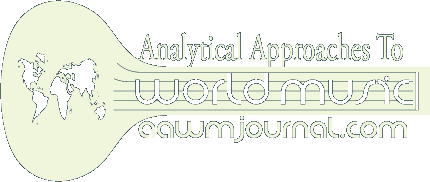|
The analysis of movement to music often stems from examinations of video-recorded events. This allows the analyst an opportunity re-watch, pause, and slow down the movements of their participants, and to produce descriptive notation that appears alongside a score (e.g., Roeder and Tenzer 2012). Unlike prescriptive forms of dance notation (e.g., Laban 1928), such transcriptions of movement often illuminate metrical connections between music and movement. However, when video-recording is not permissible, other methods of movement analysis must be developed. This paper pilots a new technique for rigorous analysis of the interaction between movement and music, which may be used in ritual settings with no video-recording...more >>
|



